Exhaust systems are a lot more complex than they might come across, and a lot of clever engineering goes into making them sound the way they do.
Take the resonator and muffler for instance — these two components together shape the sound of your exhaust by working in harmony at all times.
The muffler can’t do its job properly without the resonator, and without the muffler, the resonator is pretty much useless. This will make more sense once you understand how these components work and what makes them different.
In this article, we’ll explain the difference between a muffler and a resonator, what they do, and how they work.
Resonators Explained
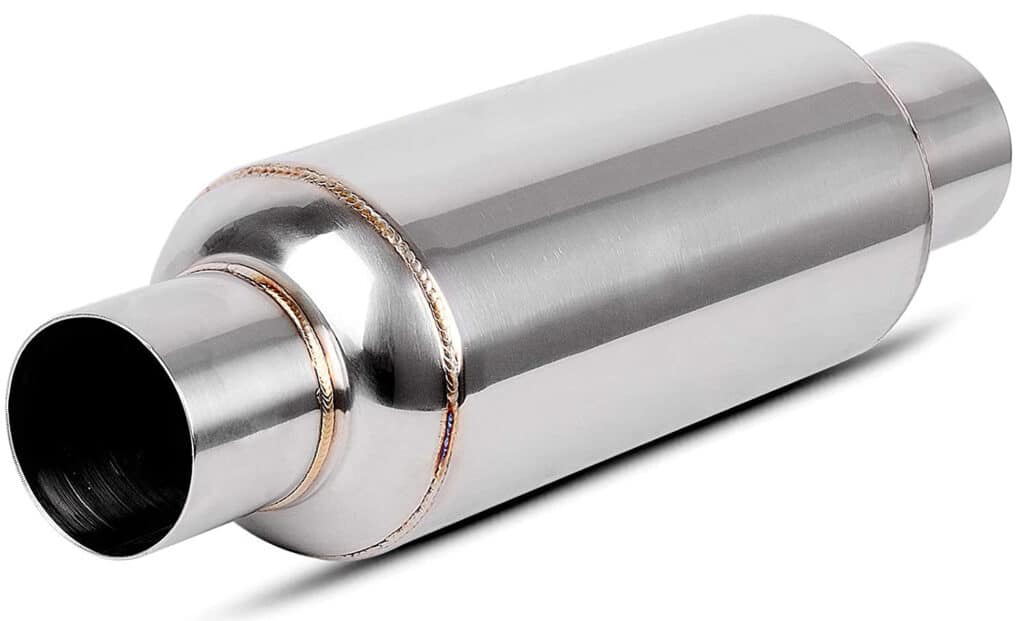
The purpose of a resonator is to morph the sound frequencies created by your engine’s combustion process before they reach the muffler. This makes it easier for the muffler to work its magic and ensure that you don’t go deaf while on your way to work.
Exhaust resonators resemble nothing more than a hollow chamber, cut one open, and inside you’ll find a perforated tube that’s much smaller in diameter than the resonator housing.
Wrapped around this tube is steel wool, and wrapped around that is sound deadening material.

Even though resonators look simple, how they work is quite fascinating. Both mufflers and resonators are designed to use something called destructive sound interference — the same principle on which noise-canceling headphones work.
What is Destructive Interference?
Take a second to think about how loud your engine is by itself — there are anywhere between 60 to 100 explosions happening in there every minute.
When the exhaust valves open, the sound from these explosions travels down the exhaust system at 345 m/s in the form of alternating high and low-pressure waves.
These pressure waves go right out the tailpipe, and into your ears where they make your eardrums vibrate, and your brain then turns these vibrations into audible sound. This is of course an oversimplification.
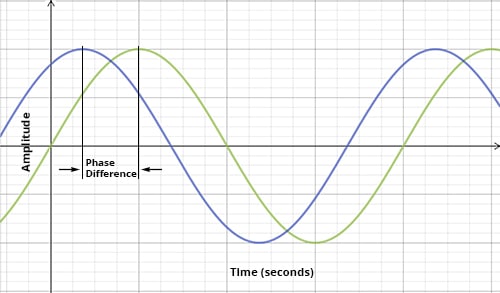
The part you need to remember is that the human eardrum can only decipher one pressure wave at a time. For example, if you have two different speakers playing two different songs, you can’t tune one out and hear only the other. And that’s the reason why destructive interference works.
Consider two sound waves — both have the same frequency, same amplitude, are perfectly aligned, and are in phase. Play these together and you’ll hear a sum of both their amplitudes. Ergo, twice as loud.
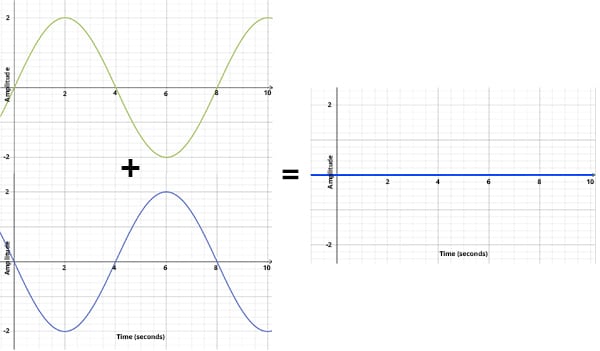
But, if one of these sound waves is pushed ahead by a one-half cycle, such that the two waves are now out-of-phase and mirror each other, you’ll hear nothing. They’ll cancel each other out as a result of having the same amplitude in opposite directions.
Both the resonator and muffler do this. Just that the resonator does most of the heavy lifting before these sound waves reach the muffler.
What Are Mufflers?
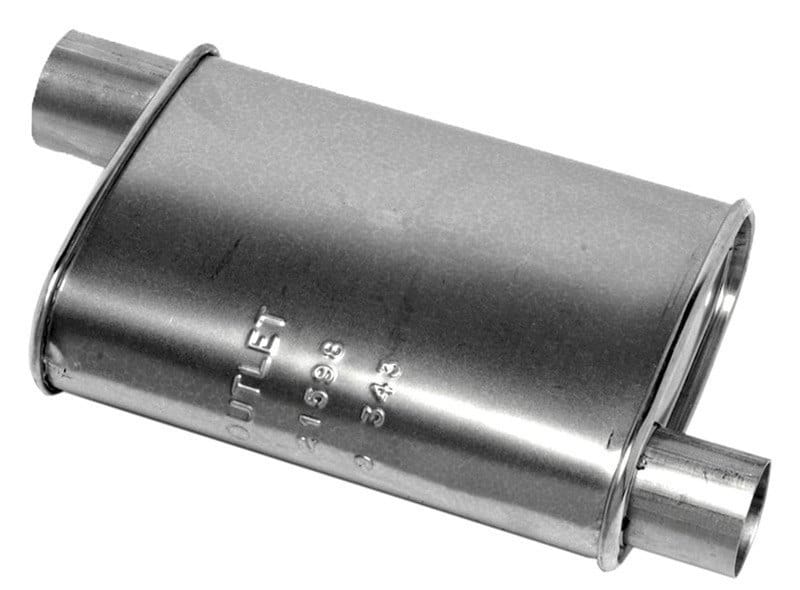
As the name suggests, the muffler’s job is to muffle unwanted exhaust noise. It has more to do with lowering the volume of the exhaust, unlike resonators, which are mainly used for altering and canceling some of the sound frequencies before they reach the muffler.
That’s not to say that mufflers don’t do the same thing as resonators. They contain perforated tubes that link to a Helmholtz resonator chamber. This design allows the muffler to create reflected sound waves that reflect and cancel each other out.
The sound waves enter the resonator chamber, then travel into the perforated tube located in the main body of the muffler.
They then exit through the cavities, reflect on the back walls of the muffler, and re-enter into a different perforated tube that leads to the outlet.
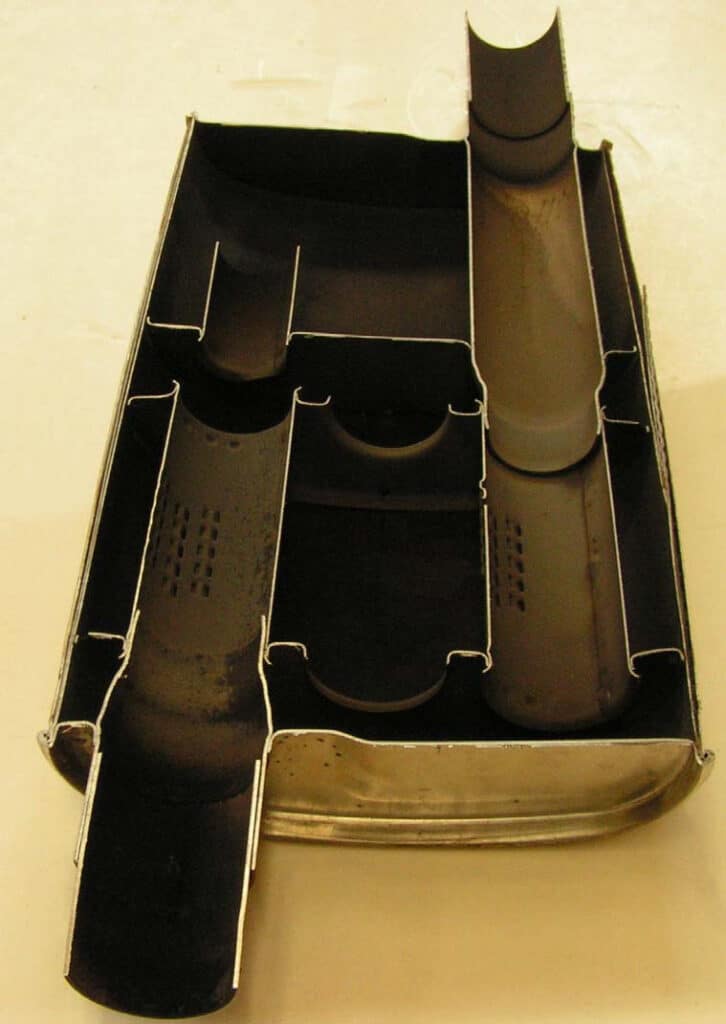
Resonator vs Muffler
Mufflers and resonators are separate components, although sometimes the interior of a muffler is referred to as the “resonator chamber”, which can be confusing.
If your car has a resonator, it’s usually going to be placed before the muffler. There are several key differences between mufflers and resonators that are worth pointing out:
Purpose
While both mufflers and resonators influence the exhaust noise level and overall tone, the muffler is generalized and the resonator is specialized.
A muffler serves to reduce the exhaust noise altogether, and the resonator works to cancel out only certain frequencies.
Function
Mufflers hinder performance because they create backpressure. Resonators do this to a lesser extent due to less baffling and restrictions in their design
All cars have mufflers as they meet regulations concerning noise levels. Resonators are not always present, but when they are, they’re typically paired with the muffler.
In other words, you can buy a stock car with a muffler and no resonator, but not one with a resonator and no muffler.
Of course, this is not necessarily the case when buying a used/modified vehicle. Enthusiasts often remove one or both of these components to make the exhaust louder.
Which One Should You Delete?
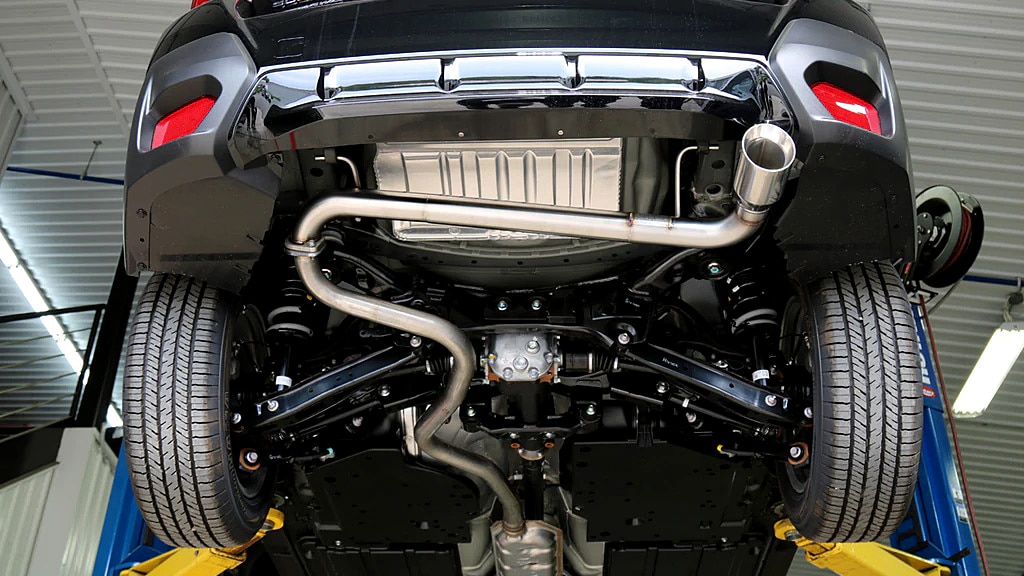
If you’re reading this, maybe you’re thinking about modifying your exhaust, but should you delete your muffler or your resonator?
The first thing to do is to figure out your goal.
If you just want your exhaust to be louder, delete the muffler. You can purchase muffler delete kits that come with new replacement piping and everything else you’ll need to bolt it on.
You can also remove only the resonator and leave the muffler in place. Doing this will result in a unique sound from your exhaust, but be warned that your exhaust might develop an annoying drone that you’ll hear at a specific rpm.
The benefit to deleting the resonator and not the muffler is that you will not increase overall noise, keeping you well within legal limits. Don’t get this confused with a test pipe, which deletes the catalytic converter.
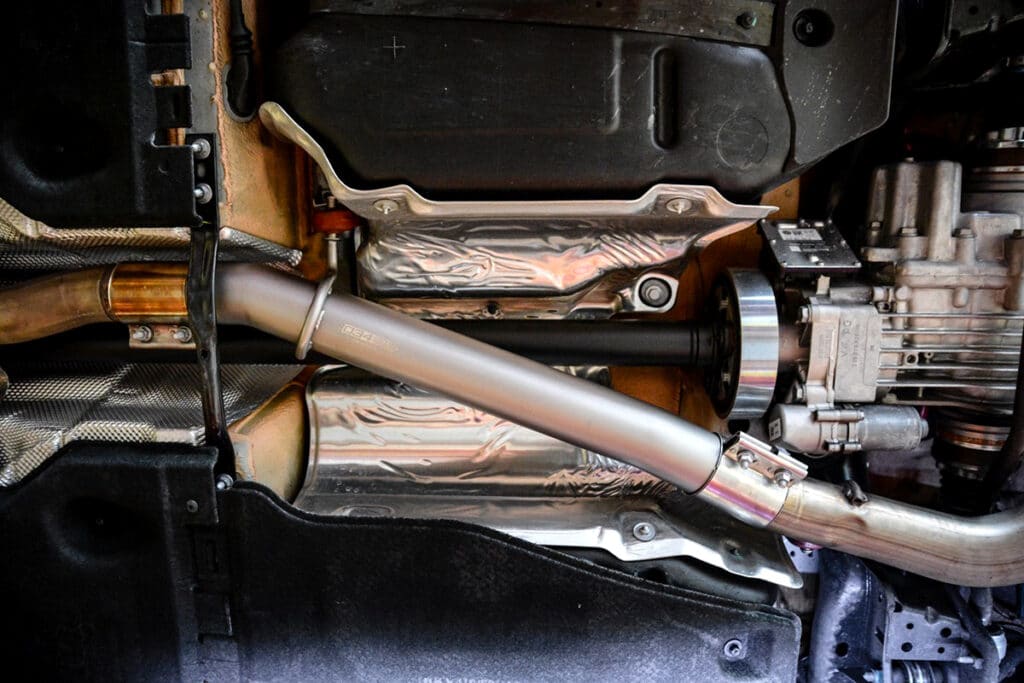
Be sure to check your local laws before modifying your exhaust in a way you know will make it louder. Depending on where you live it might even be illegal to delete your muffler.
If you find you should not remove the muffler on your street car due to local restrictions, you can still delete the resonator. It will give your exhaust a different tone, as well as provide a bit of weight reduction.
Concluding Summary
In sum, mufflers and resonators work together to produce a pleasant, yet not too noisy, exhaust note.
These components are designed in a way that minimizes performance deficits while keeping noise levels within legal requirements. However, as enthusiasts, we often want to go above and beyond factory standards to make something one of a kind.
While muffler and resonator deletes will not lead to some massive horsepower gain, you can alter the exhaust note and sound levels.
Deleting just the muffler will make your exhaust louder, and deleting only the resonator will change the tone while keeping the volume the same.
Different laws apply depending on where you live, so double-check local rules and regulations before you do anything to your muffler. Sometimes they are illegal to perform.
If muffler deletes are illegal where you live, you might still be able to delete the resonator as their removal does not increase overall noise levels.
The exhaust note is unique to every vehicle, so whether a delete of any component makes sense depends on the car you have and your personal tastes.
Often other changes to your exhaust system, like header or manifold modifications, or those involving your catalytic converter, will come under strict scrutiny from the law.
Make sure to check before making these modifications, as the fines are often substantial.

